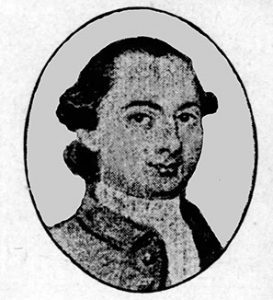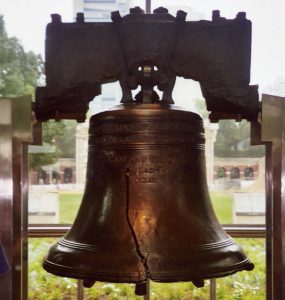Hurrie
William
1721 – 1781


William Hurrie (sometimes written as William Hurry) was born in August 1721 to unknown parents. He immigrated to America from Scotland before 1750 settling in Philadelphia. He and his wife Mary (surname unknown) lived in Southwark just south of Independence Hall.
The Liberty Bell
William is believed by historians to have been the person who rang the Liberty Bell in 1776 signifying the signing of the Declaration of Independence. At the time, he was not the doorkeeper for Congress; however, it is believed that the person in that official capacity was not present on the given day and that William Hurry rang the Liberty Bell. William later was the official keeper of the building.
Prior to this time, William had been living in Southwark, which is now a part of Philadelphia. The area is just south and east of Independence Hall. In 1769 William had no acreage, cattle, horses or servants. Thus, he paid no tax. The same is true in 1774.
After ringing the Liberty Bell in 1776 when independence was declared, William Hurrie was appointed doorkeeper to the House of Representatives of the Commonwealth of Pennsylvania in 1777. From that day until his death he performed a variety of duties for that entity as well as the Continental Congress.
The Children
William and Mary are believed to have had at least three children Margaret, Arthur, and Martha. No other children are known or suspected.
Martha
Martha is documented as William Hurrie’s daughter through marriage records, estate records, and records of the Continental Congress. Marriage records show that Martha Hurrie married Joseph Fry. Joseph not only was the administrator for William Hurrie’s estate, but he also made a request to the Continental Congress to replace his father-in-law as doorkeeper.
Margaret
Margaret’s relationship to William Hurry is described in the book “A Poor Orphan Boy“ by J.M. Stetler, the grandson of Margaret and John McGinley. Marriage records support this story as they list Margaret Hurry as marrying John McGinley. No primary sources prove her relationship to William Hurrie, however, the story told in the books is supported by the proximity and interaction of the families, including the fact that John McGinley and Joseph Fry (Martha’s husband) served together during the Revolutionary War.
Margaret and John’s daughter Christiana’s husband’s estate papers include the signatures of Joseph and William Fry. Additionally, in the last months of her life (1819), Margaret’s daughter Ann was admitted to Old Pine Street Church, which also shows a tie to the church William Hurrie attended.
Arthur
Arthur Hurrie is believed to be the son of William. The evidence is somewhat circumstantial. An Arthur Hurrie was indentured to a taylor in 1773. In that record it states that his father was William. Additionally, an Arthur Hurrie is listed as making payment to the estate of William Hurrie. DNA ties the family to descendants of Arthur, which is a positive indicator of some relationship although it is less than certain that the Hurrie line is the connection given the distance of the relationship.
Separation
William and Mary’s marriage soured. In 1773, they separated in what was known at the time as a self-divorce. To do so, he publicly stated in the newspaper that he had left the household and would not be responsible for any of her debts. At that time, self-divorce was more common than a formal divorce.
Despite the separation, in 1779, Mary Hurrie, whom William had separated from in 1773 was paid by the Continental Congress for sweeping and making fires for the Speaker. No other records of payments to Mary have been found.
Yet, in 1781, William felt so strongly about severing his relationship with Mary that he presented a memorial to the Pennsylvania House of Representatives asking for his marriage to be dissolved.
William’s Death
William died in 1781 and was buried in the church yard at the Old Pine Street Presbyterian Church.